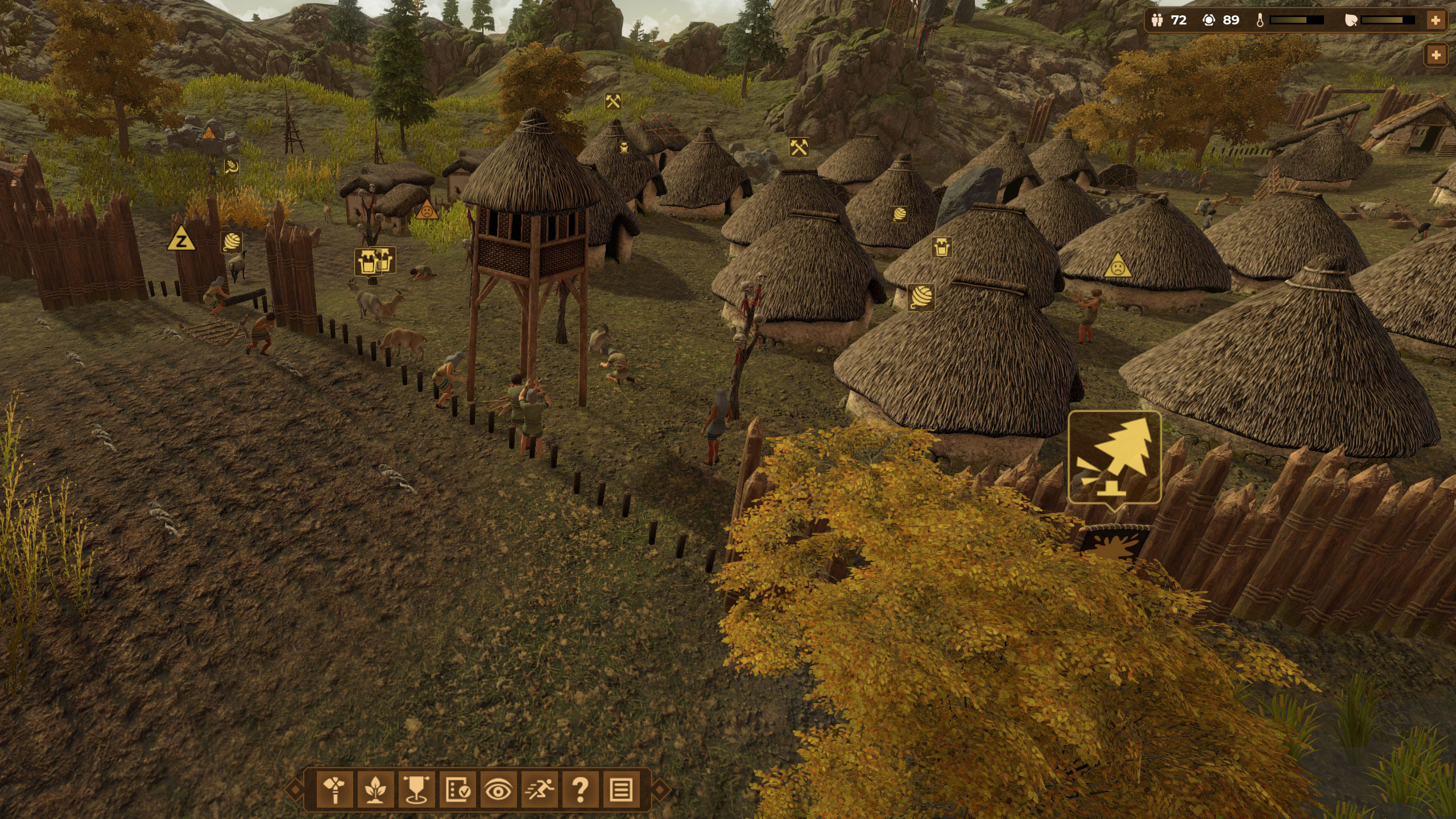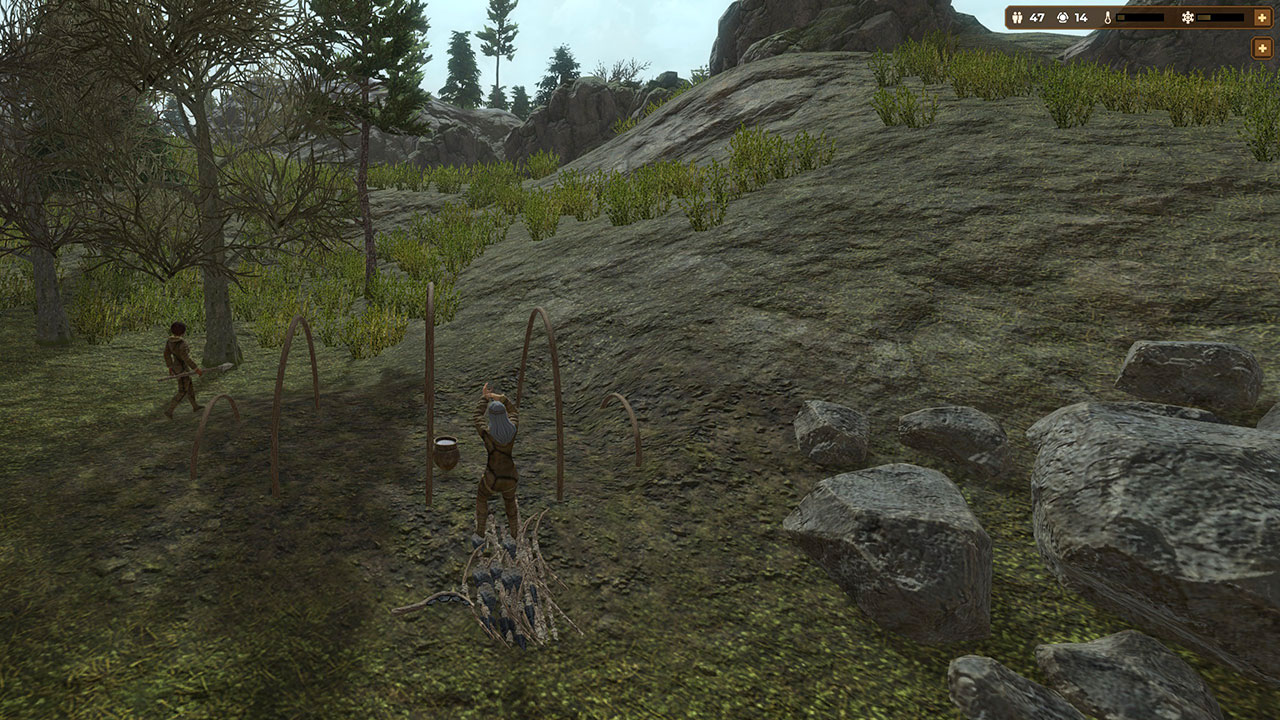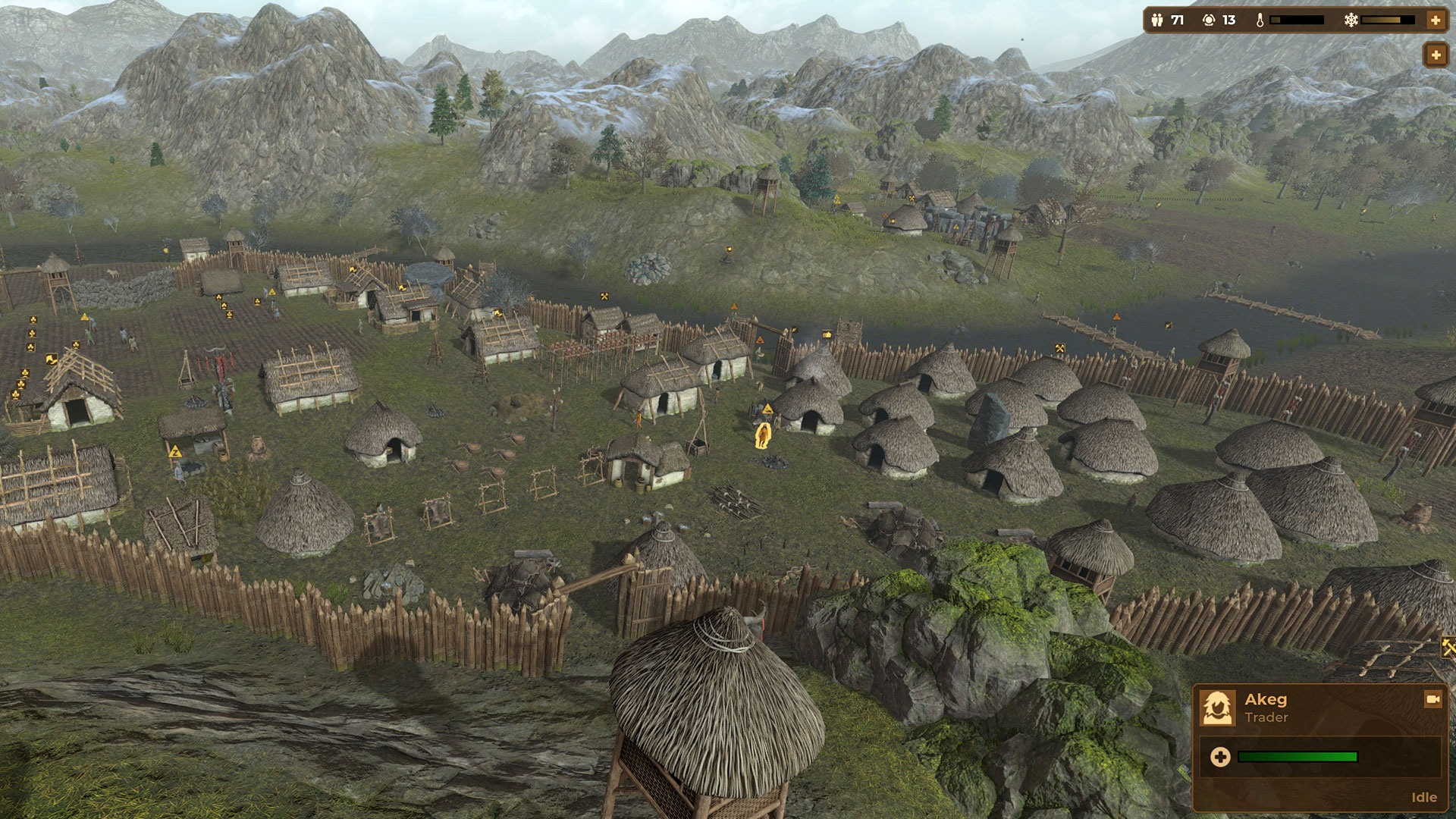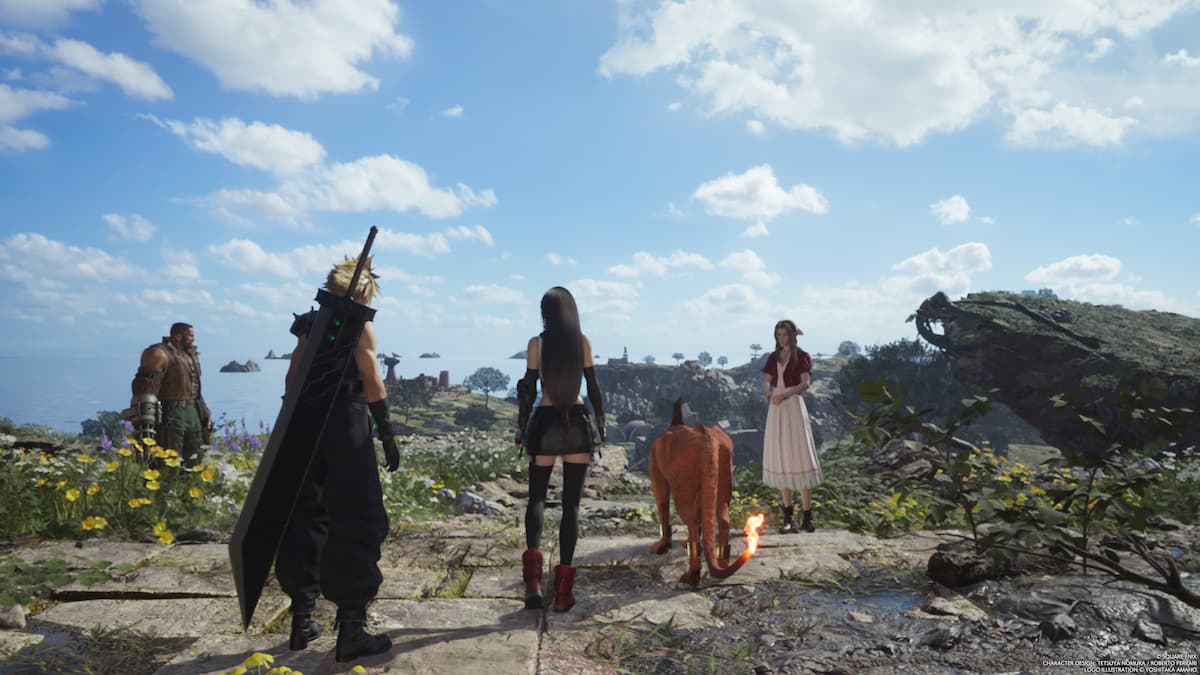
My lowest ebb in out-of-nowhere city-builder hit Dawn of Man was not when raiders slaughtered 18 of my individuals whereas they had been calmly selecting pears, or when three of my guys collapsed within the snow as a result of I’d ordered them to spend the winter hauling a bus-sized rock throughout a mountain vary (I needed to construct a henge, you see).
No, it was the Great Goat Plague. 43 of the buggers succumbed to some deadly goat lurgy, contracted as a result of my braying pals knocked hooves sooner than I may probably construct stables to accommodate all of the resultant goatlings. Because they consumed hay sooner than a half-dozen grain fields may probably re-grow. The goat-horde was thus shivering and ravenous when the frosts got here, an open door to some horrible an infection, centuries earlier than vets had been invented.
There was no treatment for the goatpocalypse. It ravaged my prehistoric tribe’s trouser-nibbling livestock. Frankly, it was a aid.
Like any good city-builder, drama in historical people management-strategy game Dawn Of Man centres round overreaching. And what makes Dawn Of Man, which is ostensibly constructed from very acquainted components, so compelling is that overreaching performs out in sudden, far-reaching methods.
Dawn Of Man may so simply have been purely brutal. It would match the sticks and stones theme, and I swear I’ve performed a dozen issues with the identical perspective and similar stark palette, which merrily stamped me into the bottom for daring to not but perceive each nuance, for having the temerity to experiment.
However, and I feel to its credit score, DOM has a distinct agenda. It has its tragedies, it has its goatpocalypses, and you may play it at totally cruel issue settings in case you so need, however actually the lesson right here is do the work and also you’ll survive – even thrive. Even bounce again from a goatpocalypse.
In that case, catastrophe arose as a result of I used to be so excited a couple of newly-acquired tech unlock, which enabled my gaggle of settlers (who beforehand had been restricted to selecting berries or throwing stones at wolves) to now catch after which farm their very own livestock. So I had my hunters keep their slings and as an alternative lasso each ibex child they may discover, and mouflon and boar too. I purchased extra nonetheless from the irregularly-appearing dealer, swapping bones and primary blades for child boars. I overreached.
I didn’t realise the goats would breed. I’m so accustomed to technique animals being static sources, not dwelling issues. I don’t imagine I’ve ever performed a city-builder with attractive goats in it earlier than.
I couldn’t construct sufficient stables. I couldn’t plant sufficient grain fields. I couldn’t harvest sufficient hay. I couldn’t lure sufficient new individuals to my camp to minimize the exhausting, ever-growing workload. I couldn’t manually order goats slaughtered shortly sufficient to compensate for his or her relentless fucking.
There had been quickly extra goats than individuals in my bone-and-stone settlement. People died, run off their toes, too busy to eat and to sleep, enslaved to the infinite goat military.
Until the goat-plague got here, and there was peace in our time. And a lot extra hay to construct roofs from.
A sequence of occasions that felt distinctive to me, that felt like a game proudly owning the actual challenges of its prehistoric theme, reasonably than going by way of well-established motions with an historical pores and skin. Dawn Of Man by no means lets go of the significance of sources, of constructing positive there’s sufficient to go round, of educating me {that a} new innovation represents a profound change for these easy individuals.
It’s been a superb month for strategy-management games which zero in on a selected tone reasonably than attempt to go as huge as attainable. The bucolic Foundation was town-building as Sunday dinner, all lazily serving to your self to extra, extra, extra with no strain to do the rest. Now Dawn Of Man focuses unswervingly upon the rudiments of civilization, with even the idea of luxurious but to happen to any of its festering tribespeople. Their highest aspiration in life is to have a cranium on a stick outdoors their entrance door (a door which is itself constituted of one thing’s pores and skin).
The work begins at selecting up sticks with which to make flimsy fish-poking instruments, and rises to the giddy heights of constructing stone partitions and hammering scorching iron into one thing pointy. In different phrases, it’s the primary few turns of Civilization, or the primary half hour of an historic RTS, dragged below the microscope and enlarged right into a full game. Taming that first ibex was an enormous milestone; searching a mammoth for the primary time was the stuff of legend; my shivering historical people determining easy methods to bend a stick right into a bow or coat their skin-thin huts in thick mud felt like the entire world had modified.
Most nuts and bolts are completely acquainted in case you’ve ever performed a Settlers or an Age of Empires, nevertheless it’s this absolute deal with a selected period, and its specific challenges, that makes Dawn of Man all its personal. Oh, the delight I felt when, hours later, I appeared upon a scene that when was 4 tiny individuals miserably selecting up fallen branches.
Now, it was a neat unfold of fields, dozens of thatch-roofed huts, and eighty wool-clad people dwelling reasonably snug lives. They hauled logs on horse-drawn carts, they roved simply throughout bridges that crossed an unlimited river they as soon as needed to swim throughout simply to gather a little bit of flint, and so they relaxed round a stone circle constructed from towering megaliths that had been hand-dragged from miles away.
All of this had been constructed. Not merely positioned after which routinely erected if there was sufficient gold within the financial institution – each stone, each department, each little bit of cover or bale of hay gathered and carried. Every inch of this place the results of my individuals’s arduous labour.
Dawn Of Man completely achieves what it units out to do, then, however not with out a few stumbles. The interface isn’t a lot assist relating to figuring out precisely the place and the way one thing’s gone awry, the makes an attempt to stability automation with handbook intervention can really feel inelegant, and the shift to keeping off irregular raiders within the later levels of the game looks like a drained default reasonably than an try to plot extra fascinating peril.
The maps are pleasingly monumental, however a lot of the nice unfold of mountains, lakes and forests in the end purposeless, with no higher objective when you’ve constructed all there’s to construct. And its makes an attempt to maneuver the historic needle onwards, as stone age turns into bronze age turns into iron age, occur with only a shrug. The sudden extinction of the astounding ice age beasts I had as soon as hunted, the mammoths, woolly rhinos and megaloceros, was a flat textual content assertion, the entire world instantly rendered much less pleasant.
But what a journey it had been. That doesn’t really feel like a press release that may typically be mentioned of a city-builder – a real sense that every little thing had modified, versus being a simple march in direction of revenue, throughout my time with it. Dawn Of Man’s nice triumph is that, a dozen hours after I’d picked my first berry, forging my first iron sword felt like an immortal accomplishment.







